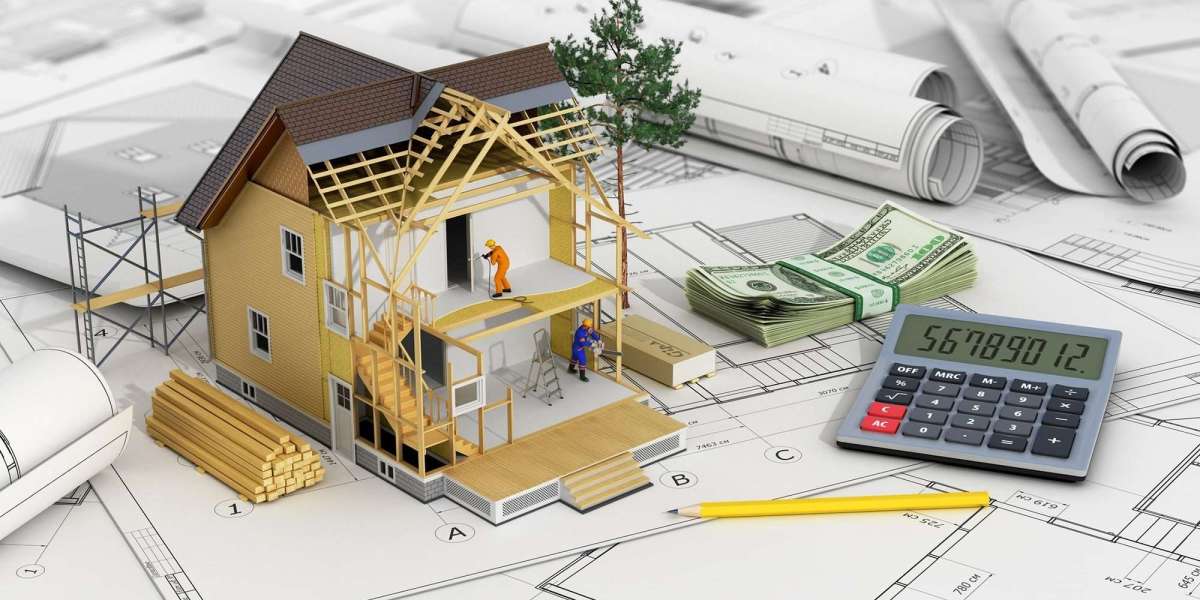Building a house is one of the biggest investments most people make in their lifetime. Without a proper budget, even a well-planned project can quickly spiral into unexpected costs and delays. A construction budget provides a clear financial roadmap, helping homeowners control spending, allocate funds wisely, and avoid unnecessary debt. Many homeowners and contractors use preliminary takeoff services at the early stages to create a realistic financial picture before starting. This ensures the project remains feasible and reduces the chance of cost overruns.
This article explains in detail how to make a budget for a house construction project, including steps, cost categories, best practices, and common mistakes to avoid.
Why a Construction Budget Matters
- Prevents overspending by setting clear financial limits
- Helps secure bank loans or financing with realistic figures
- Guides decision-making about materials and finishes
- Improves contractor negotiations with clear cost expectations
- Acts as a monitoring tool throughout construction
Step-by-Step Guide to Making a House Construction Budget
Step 1 Define Your Project Scope
Start by clarifying:
- Size of the house (square footage, number of floors, number of rooms)
- Style (modern, traditional, luxury, basic)
- Location and plot details
- Desired finishes (standard vs. premium)
- Special features (basement, swimming pool, solar panels)
The more detailed your scope, the more accurate your budget will be.
Step 2 Identify Funding Sources
Decide how you will finance the construction:
- Personal savings
- Bank loan or mortgage
- Family contribution
- Combination of these
Knowing available funds upfront prevents committing to a project beyond your financial capacity.
Step 3 Use Preliminary Estimates
At the concept stage, detailed drawings may not be ready. This is where preliminary estimates play a key role. Using cost per square foot (or per square meter) from similar projects gives you a quick idea of the total cost. For example:
- Standard house: $100–$150 per sq. ft.
- Mid-range finishes: $150–$250 per sq. ft.
- Luxury finishes: $250+ per sq. ft.
Step 4 Break Down Costs into Major Categories
A well-structured budget separates costs into categories:
- Land Cost: Purchase price, legal fees, registration, permits
- Site Preparation: Clearing, excavation, grading, temporary utilities
- Foundation and Structure: Concrete, steel, masonry, roofing framework
- Exterior Works: Walls, windows, doors, roofing, cladding
- Interior Works: Flooring, ceilings, painting, finishes
- Plumbing and Electrical: Piping, wiring, fixtures, lighting, HVAC
- Fixtures and Fittings: Cabinets, wardrobes, appliances
- External Works: Driveways, landscaping, fencing
- Professional Fees: Architect, engineer, permits, inspections
- Contingency: Allowance for unexpected costs (5–15%)
Step 5 Get Quotes from Contractors and Suppliers
Once you have a preliminary breakdown, reach out to multiple contractors and suppliers for quotations. Compare them against your preliminary figures to refine the budget.
Step 6 Factor in Hidden Costs
Common hidden costs include:
- Utility connection fees (water, electricity, gas)
- Permit and approval charges
- Soil testing and site surveys
- Insurance and taxes
- Escalation due to inflation or delays
Step 7 Add a Contingency Allowance
Every construction project faces uncertainties. Adding a 5–15% contingency ensures you are financially prepared for unforeseen changes. For example, if your estimated cost is $200,000, a 10% contingency means setting aside $20,000 extra.
Step 8 Create a Cash Flow Plan
Construction costs don’t come all at once. Payments are spread across stages such as foundation, structure, finishing, and handover. A cash flow plan ensures funds are available at the right time and prevents work stoppage due to delayed payments.
Step 9 Monitor and Update the Budget
A budget is not static. Regularly track actual spending against the budget to identify variances. If costs rise in one area, adjust other areas or reduce non-essential upgrades.
Example: Budget for a 2,000 Sq. Ft. House
- Land Cost: $50,000
- Site Preparation: $10,000
- Foundation and Structure: $60,000
- Exterior Works: $40,000
- Interior Works: $35,000
- Plumbing and Electrical: $25,000
- Fixtures and Fittings: $20,000
- External Works: $15,000
- Professional Fees: $10,000
- Contingency (10%): $26,500
Total Budget: $291,500
This example shows how preliminary planning creates a realistic financial roadmap.
Tips to Stay Within Budget
- Finalize the design before starting construction
- Stick to planned materials and finishes
- Avoid frequent scope changes
- Buy materials in bulk to reduce costs
- Track expenses weekly instead of monthly
Common Mistakes in Construction Budgeting
- Ignoring hidden costs like permits and utilities
- Underestimating contingency needs
- Not updating budget during construction
- Relying only on one contractor’s quote
- Over-focusing on aesthetics instead of essentials
Conclusion
Making a budget for house construction is not just about listing costs it is about building a financial control system that supports your dream home. By clearly defining scope, using preliminary estimates, breaking costs into categories, and adding contingency, you create a realistic and reliable budget. Regular monitoring ensures the project stays on track. Homeowners who invest time in budgeting early are more likely to finish on time, within cost, and with fewer financial surprises.
FAQs
Q1: Can I start construction without a budget?
It is risky. Without a budget, you may run out of funds before completion.
Q2: How accurate are preliminary house budgets?
They are usually within ±20–30% at the early stage, improving as designs progress.
Q3: Should I include furniture and landscaping in my house budget?
Yes, if you plan to complete them immediately after construction.
Q4: How much contingency should I keep?
A 10% contingency is standard, but for complex designs or uncertain markets, 15% is safer.
Q5: Can budgeting help me get a bank loan?
Yes, banks and lenders prefer detailed budgets as proof of financial planning.







